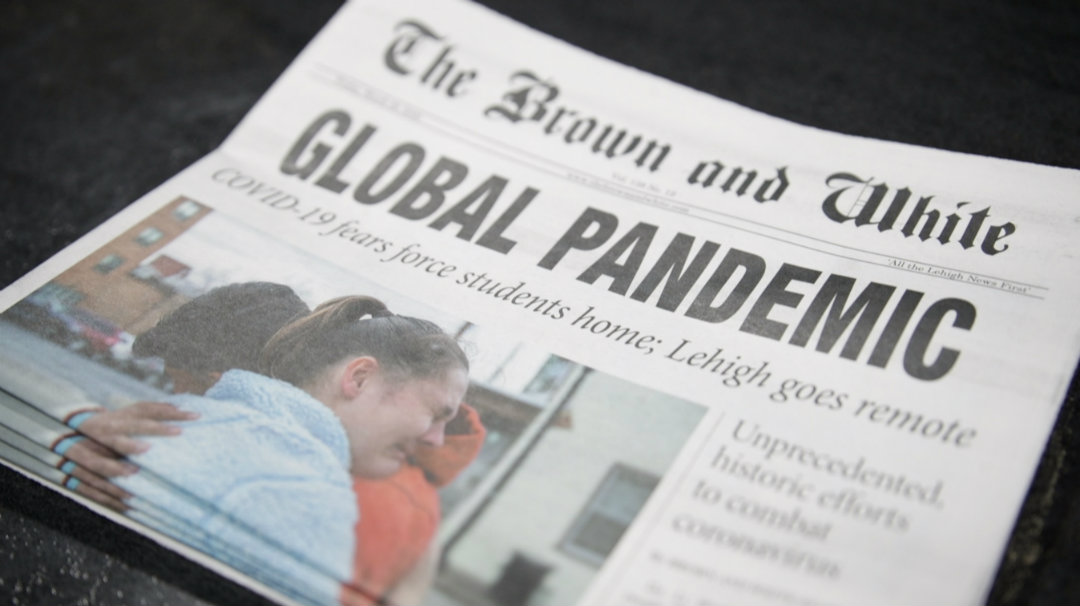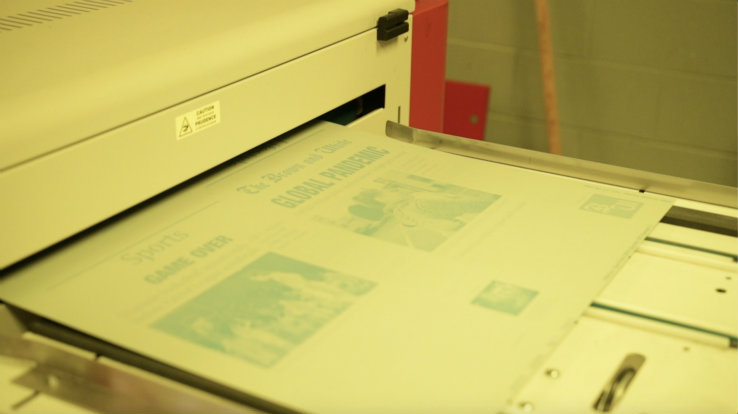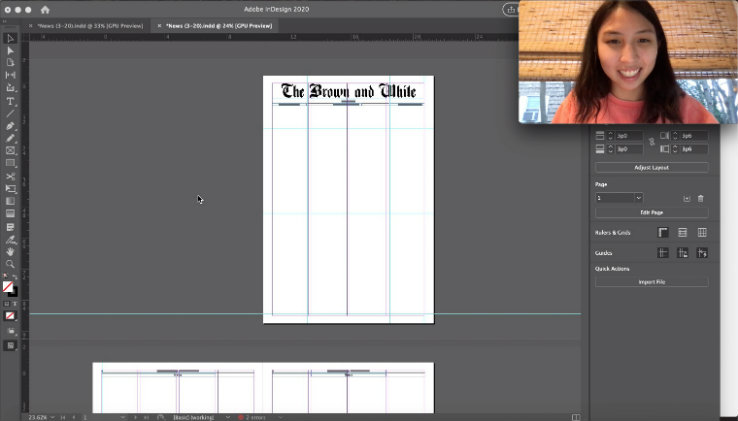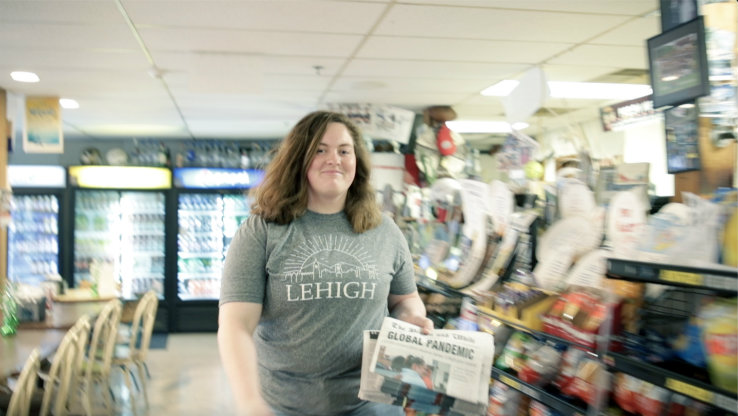Even before Lehigh decided to remotely hold classes, The Brown and White had planned for the rest of the semester to be online-only in case of a worst-case scenario.
“We thought it was best just to prepare for the worst case scenario, which is that we would be all [remote],” Epstein says. “It was better to prepare for the absolute worst case than to have nothing or to have it done halfway and then be grasping for straws. We were definitely prepared for being remote the rest of the semester, which I think helped us.”
The conversation for the editors centered on what the content and workflow would look like going forward. With a staff of over 150 students working remotely and physically apart from one another, workflow becomes extremely important, Veto says. Then, they began to review production nights, step-by-step, which included figuring out how story budget meetings would be held and stories would be edited. They also discussed how reporting, designing and taking photographs would be accomplished.
Veto says they realized right away they were going to get a deluge of breaking news, and knowing that, they needed to prepare. The work required a bigger team, and they weren’t going to isolate themselves into the typical sections of a newspaper, such as news, life and sports.
“It was all editors, all reporters, all hands on deck covering life in the coronavirus,” Veto says.
The Brown and White’s first stories after Lehigh transitioned to remote learning included national news and the impact the coronavirus was having on the campus, its students and faculty and its community, such as students experiencing the country’s first containment zone in New Rochelle, New York, and students and faculty adjusting to online classes. They also posted Pennsylvania news stories, such as the first coronavirus death in the state as well as the impact on the state’s primary election.
An online transportation photo gallery was also posted, featuring images in airports around the country and in London and the New York City subway, which were taken by newspaper staff and Lehigh community members. They also launched a city documentation series on Instagram, which Esptein says will appear on their website, that featured staff photos documenting empty cities such as Boston, New York, San Francisco and Minneapolis.
Epstein says they’ve actually been producing more content because of the surge in news and taking the opportunity of covering stories they wouldn’t normally cover but can with a staff now spread across the globe.
“In the last couple weeks, we've completely expanded our coverage into something that we might never have the opportunity to do again,” Epstein says. “And that's something that I reminded the editors and the staff a lot at the beginning. Yes, this is a horrible situation. But at the same time we have the opportunity to do something that we've never been able to do before and hopefully we never have to do again because we would never want this situation again, but while we're in it, let's make the most of our staff being stretched across the world. We've done a great job of that so far.”
Additionally, The Brown and White is relying on crowdsourcing content, whether it be students at-large or alumni. They’re working on adding a form to their website’s homepage that will allow users to submit their story and visual content.








